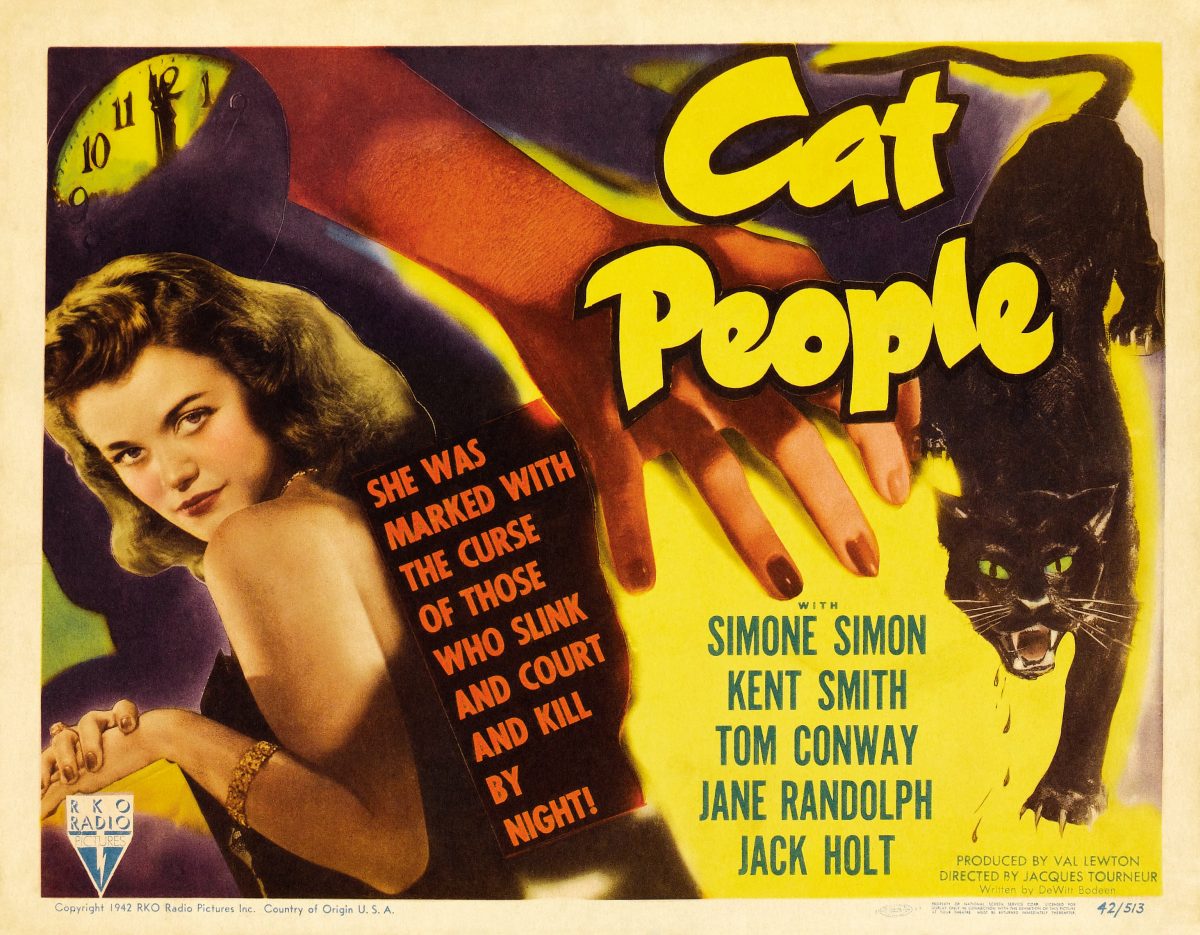Cat People

Jacques Tourneur
USA – 1942

Screenplay: DeWitt Bodeen
Cinematography: Nicholas Musuraca
Production: RKO Pictures
Language: English, Czech, Serbian
Duration: 73 min
Color: Black and White
Synopsis: Irena Dubrovna, a fashion artist, has recently arrived in New York from Eastern Europe. She meets engineer Oliver Reed at the zoo, near the cages of the big cats, where she likes to work on her sketches. The two fall in love and get married despite Irena’s reservations. She has always felt different than other people, because of an ancient story of witchcraft from her homeland. The story tells that women from her village change into great cats whenever aroused by passion, anger or jealousy. In therapy, Dr. Judd, the psychiatrist, learns that, because of her superstitions, Irena is has always been afraid of falling in love. Her fears are put to the test when Oliver seeks solace from his distant spouse with co-worker Alice Moore. Beware the curse of the cat people when Irena learns that she may be losing Oliver to Alice!
Notes:
When the completed Cat People was first screened for RKO president Charles Koerner in the autumn of 1942, he wouldn’t speak to producer Val Lewton or director Jacques Tourneur, “then left in a hurry”. Critics were not bowled over by it, either – and then it took off with audiences, grossing an estimated $4,000,000, and saving a studio left seriously in the red by the indulgence of Orson Welles’ expensive but unprofitable masterpieces Citizen Kane (1941) and The Magnificent Ambersons (1942). This success paved the way, for better and worse, for the rest of legendary producer Lewton’s career. Of the 14 films he guided into being before his premature death in 1951, nine were, ostensibly, “B” horror flicks. However, he and his creative teams invested these modest projects with a style and resonance that have distinguished them in the genre. To this day, Lewton is one of the few film producers who have left a body of stylistically coherent work.
The film can be dissected according to any number of theoretical approaches, and, as such, is a bit of catnip for intellectuals. Its incredible popularity at the time can probably be ascribed to its forthright discussion of sexual feeling – and its seeming demonisation of the same. The brief shot of water glistening on the heroine’s naked back as she crouches, sobbing, after a kill, is one of the more disturbing moments in 1940s film. But the armchair Freudianism underneath the film’s most wearisome bouts of imagery (doors, keys, swords) has long ago lost its punch. More persuasive is film scholar Dana B. Polan’s assertion that “Cat People is a tragedy about a world’s inability to accept, or even attempt to understand, whatever falls outside its defining frames”. The doomed Irena’s struggle owes a great deal to The Wolf Man (directed by George Waggner and scripted by Curt Siodmak) from the previous year – particularly the cursed protagonist, who struggles to warn those who scoff around him (Siodmak was on board for Lewton’s next film, 1943’s I Walked with a Zombie). In Irena’s case, the burden of proof increases exponentially, due to her sex. The completely unacceptable source of her transformative power, and the ease with which she is dismissed, insulted and preyed upon, mark important points, culturally, for pre-feminist America.
Excerpts from Weismann, Brad. “Cat People” Senses Of Cinema: An Online Film Journal Devoted To The Serious And Eclectic Discussion Of Cinema 44, (August 2007)


